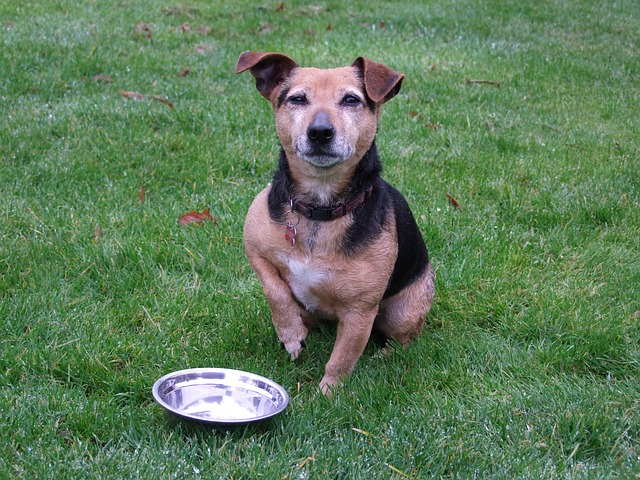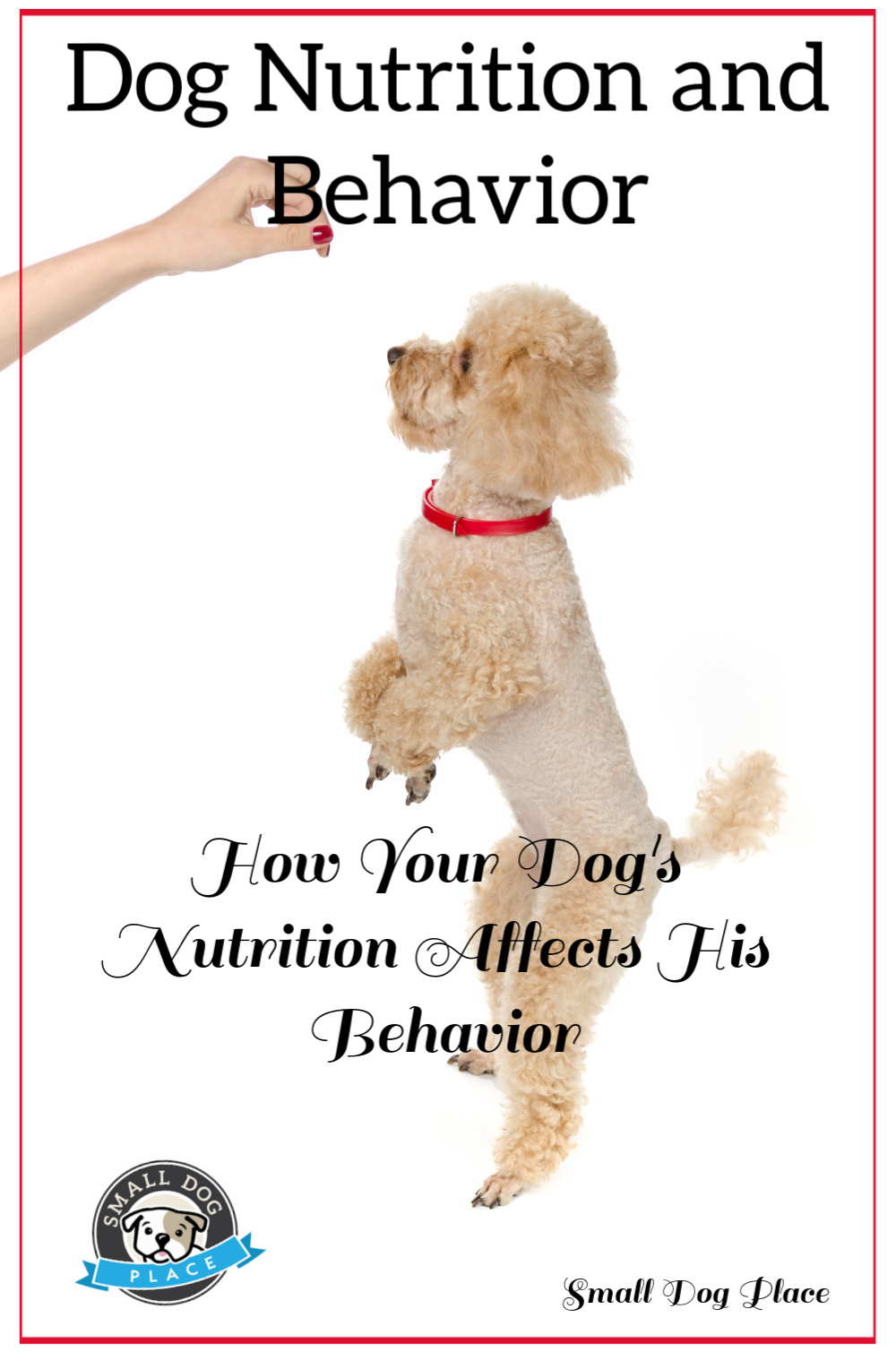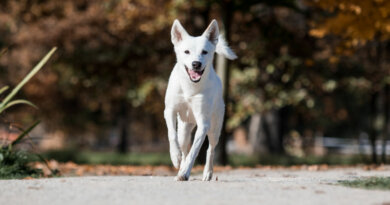How Your Dog’s Nutrition Affects Behavior
Dog Nutrition and Behavior By the Team at ThePets |Published 05-22-2020
Dog behavior depends on breed, temperament, training, environment, genetics, and so much more. But have you considered that the food your dog eats may also affect his behavior?
Of course, you know that proper nutrition is vital for the well-being of your dog. But sadly, because our beloved pets can’t speak, many health conditions often first appear as changes in mood or temperament. They might even seem to have developed behavior problems.
Formerly active dogs can become tired, listless, and lag behind on walks. Good-natured dogs can become aggressive. On the other hand, proper nutrition can help mental function and make training easier. A proper diet can help manage health conditions and improve mood.
 @alexandrgrant / Freepik
@alexandrgrant / FreepikDifferent nutritional deficiencies have various symptoms. Let’s take a look at some of the essential nutrients for your pet and how they can affect their behavior.
Here are the necessary nutrients that your dog needs:
- Water
- Protein
- Carbohydrates
- Fats
- Minerals
- Vitamins
Your dog must have the right mix of the proper nutrients for their health, according to research. A good, well-balanced diet will contain the appropriate amounts to keep your pet fit, both physically and mentally.
Dog Nutrition and Behavior: Here’s how inefficiencies in diet can change your dog’s demeanor
Carbohydrates and Energy
High-quality dog diets will always include some form of carbohydrates. Even grain-free diets will contain vegetables, an excellent form of carbs.
Carbohydrates are necessary for your dog since they are the primary source of energy for the body. Your pet uses carbohydrates for growth, body maintenance, and energy. Without enough carbs, your dog can appear lethargic and have a lack of energy.
 @fizel / Freepik
@fizel / FreepikHowever, too many carbs at the wrong times can cause blood sugar surges. Just like a child with too much candy, too many carbohydrates can lead to energy peaks followed by troughs of low energy, which is why balance is critical.
Dog Nutrition and Behavior: The Link Between Thiamine and Metabolism
Thiamine is also known as Vitamin B. Vitamin B is an essential vitamin for dogs. It helps in carbohydrate metabolism, and your dog’s brain and other organs require it. You may recognize thiamine from news articles about pet food.
In the past few years, several recalls of common commercial pet foods have occurred because they did not contain enough thiamine.
If your pet doesn’t get enough thiamine in their diet, you might notice a lack of appetite and GI upset, leading to weight loss. Long term symptoms include muscle weakness and then neurological symptoms such as unequal pupil sizes and decreased light response.
Can Dog Food Cause my Dog to be Hyperactive?
Calcium and Agitation

When you think of calcium, you might think of healthy bones and teeth, which is true. However, when your dog has too little calcium in their blood, it can also show in your dog’s behavior.
This condition is known as hypocalcemia. For example, common signs of hypocalcemia include panting excessively, restlessness, excessive face rubbing against objects, and agitation.
Calcium deficiency is a severe condition requiring immediate treatment, but it may be hard to observe symptoms in mild cases. That’s why having a healthy, well-rounded diet is so important.
Can Food Cause Aggression in Dogs?
Essential Fatty Acids and Aggression
Another essential aspect of good nutrition for dogs is essential fatty acids. Omega-3 and Omega-6 are essential fatty acids. Like people, dogs cannot produce these fatty acids on their own. In order to get these fatty acids, they must come from the diet.
A good source of fatty acids is fish oil. Fish oil is used to treat several dog health conditions. It is good for heart wellness, skin conditions, and promoting a healthy coat. It can even give a boost to the immune system. But how does fish oil help with behavior?
Fatty acids are also excellent for helping with arthritis. Did you know that nearly 1 in 5 dogs suffer from some form of arthritis? Some of the common signs of arthritis can seem like behavior issues. For example, a reluctance to play, jump, or climb stairs.
A formerly active dog that is now lagging behind on walks. Or, if your dog shows a change in personality, going from sweet-natured to showing aggression, it might be because they are in pain from arthritis. Even some young dogs can have early onset arthritis.
Importance in Finding the Right Food for Your Dog
 @michaelwb / Unsplash
@michaelwb / UnsplashAs mentioned, the right food will help your dog live a long healthy life and minimize medical conditions. Proper nutrition helps your dog feel and act their best. It can also help manage blood sugar levels and improve brain function, which helps in attention and training.
Are you looking to find good food for your dog? Check out pet food finder on ThePets that allows you to find a perfect food by age, weight, budget, and known allergies.
Dog Nutrition and Behavior: Food allergies
Dogs can have quite a few different kinds of allergies, including sensitivities to some types of foods. While some symptoms are similar to human allergies – sneezing, hives, and itchiness, for example, others will be more specific to your pet, like constant licking.
Licking paws and other extremities can seem like a behavior problem, when, in fact, it can be due to something in their diet. Some ingredients that dogs can have problems with include beef, chicken, eggs, corn, wheat, soy, and milk.
 @aonip / Freepik
@aonip / FreepikOther dogs will develop ear infections, which can lead to symptoms like walking in circles, head shaking, loss of balance, and even hearing loss.
A dog with an ear infection can seem inattentive to commands because they are distracted by pain or itching. If hearing loss occurs, your pet may not be ignoring you; they might not be able to hear you.
Antioxidants and Training
The old saw “you can’t teach an old dog new tricks” is, of course, false. However, like people, dogs do learn faster when they are younger. But an older dog can absolutely be rained for new tricks, though it might take a little longer.
And their diet can help.
Studies have shown that a diet with antioxidants can partially reduce the effects of aging on the dog brain. This means that if you are trying to teach your dog a new behavior or train out an old one, a well-rounded diet can help them learn more quickly.
Dog Nutrition and Behavior: Last Words
No one would doubt that the role of nutrition plays a pivotal role in the health of the individual, whether it be a dog or us. But, nutrition is also vitally important when it comes to a dog’s behavior.
There is a clear link between a diet that is well-balanced with high quality ingredients and your dog’s behavior. When dogs eat the right foods, in the correct amounts and proper ratios, they are calmer and show less undesirable behaviors. Food allergies are a problem in some dogs and finding the right ingredients that a dog can tolerate can drastically improve unwanted behaviors.
When one vital ingredient is lacking in the diet or in short supply, dogs react overtime showing signs as diverse as agitation to lethargy. Lack of some nutrients such as antioxidants can even lead to premature aging.
As the old adage states, you are what you eat, and this is also true for dogs.
Dog Nutrition and Behavior: Pin for Future Reference
 Dog Nutrition and Behavior Pin
Dog Nutrition and Behavior PinAbout the Authors
ThePets team is passionate to share practical tips and help pet owners care for their pet. Their library contains over 100 in-depth articles cover a breadth of topics about pets. Their team of certified veterinarians and writers publish and update insightful articles full of valuable information, honed by many years of experience. Pet experts strive to provide you with the most reliable information about how to keep your animals healthy and happy.
Did You Find Dog Nutrition and Behavior Helpful?
Does This Article Deserve Your Thumbs Up?
We always appreciate your support and encouragement. Your thumbs up means so much to us.

Free Monthly Newsletter
Sign Up for Our Free Newsletter and get our Free Gift to You.
my E-book, The Top 10 Mistakes People Make When Choosing a Dog (and how to avoid them)
If you enjoyed this page, I’d love it if you’d let me know. Just click the button below. Thank you.
Sharing is Caring



